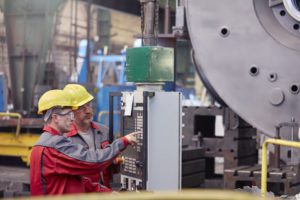IT environments are rapidly changing as organizations deploy new solutions at the edge to leverage advances in the Industrial Internet of Things (IIoT), artificial intelligence (AI), and augmented reality (AR). This digital transformation causes fluctuations in power demand, creating challenges in quickly scaling uninterruptible power supply (UPS) technology.
The amount of capacity an organization needs today is likely more than yesterday and may fall short of new requirements tomorrow. As a result, companies need UPSs that can easily scale to meet their growing needs. A new class of modular UPSs is designed especially for expanding IT environments that stretch and widen on a regular basis.

With simplified installation, scalability, and maintenance, these modular UPSs allow organizations to rapidly add capacity anywhere in their distributed IT environments. This capability improves uptime by ensuring environments have enough uninterruptible power in case of an outage that would otherwise shut down operations.
Uptime and availability are a top priority now that organizations rely so heavily on their digital assets. This is the case in almost every industry today – especially in manufacturing, healthcare, logistics, and transportation, where 24/7 operations are commonplace.
What to Look for in a modular UPS
When adding UPS capacity to support digital transformation, organizations should consider the following criteria:
- Improved uptime
- Scalability
- Compact footprint
- Remote monitoring and management capabilities
- Efficiency and sustainability-related certification
- Total cost of ownership
Schneider Electric’s Easy UPS 3-Phase Modular solution checks all of these boxes. As explained in this video, the solution delivers high availability and uptime with no extra footprint, thanks to N+1 internal redundancy.
As for scalability, Easy UPS 3-Phase Modular units expand from 50 kW to 250 kW. Scalability and modularity enable companies to avoid over-provisioning, buying only the capacity they need upfront, and adding power modules later as capacity requirements grow.
When replacing modules, Easy UPS 3-Phase Modular offers a simpler, safer way to add capacity. Live Swap is a third party-certified method of removing and adding modules without having to shut down the entire unit. Live Swap offers two distinct advantages:
- It allows replacing, adding, and removing modules while the UPS remains online. There is no need to transfer the UPS to maintenance bypass or battery operation, so an organization doesn’t have to schedule downtime to make the changes. The result is a net gain in uptime.
- It’s a touch-safe process that underwent rigorous testing to ensure the safety of users while adding and removing UPS modules. The units were designed to minimize the risk of shock and potential arc flash and ensure touch safety during the swapping process.
Reduce footprint with sustainability in mind
Easy UPS 3-Phase Modular has a smaller footprint than comparable legacy units, measuring 600 millimeters in width and 850 millimeters in depth, so they free up rack space for other critical IT equipment. And because of their scalability, no space penalty is incurred when adding capacity.
To help reduce carbon footprint, Schneider designed Easy UPS 3-Phase Modular with sustainability in mind. The product meets Green Premium standards, which means it was built to be as energy-efficient as possible and with recycled and recyclable materials.
Also contributing to the product’s sustainability are its remote management features. Easy UPS 3-Phase Modular can be remotely monitored and managed through Schneider EcoStruxure IT, which enables secure, resilient, sustainable IT infrastructure operations.
Support digital transformation
All of these features make Easy UPS 3-Phase Modular an ideal fit for expanding environments. The units are easy and affordable to install, maintain, and accommodate fast growth in dynamic markets. Discover how the Easy UPS 3-Phase Modular solution can help your organization with its growing digital transformation needs. To learn more, watch this short video.




Add a comment